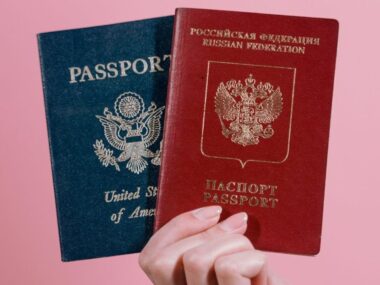Studying abroad offers international students the opportunity to gain a world-class education, experience new cultures, and enhance their career prospects. However, one of the biggest challenges faced by students aspiring to study in a foreign country is securing financial support and meeting visa requirements. This is where student visa sponsorship becomes essential.
Student visa sponsorship helps students cover tuition fees, living expenses, and other related costs while ensuring they meet the financial requirements for obtaining a visa. Whether sponsorship comes from a government, university, private organization, or employer, it plays a critical role in enabling students to pursue their academic dreams without financial burdens.
This comprehensive guide explores everything you need to know about student visa sponsorship for international students—including its types, eligibility criteria, application process, and tips for securing sponsorship successfully. If you are an aspiring international student looking for funding options, this guide will provide you with valuable insights to help you navigate the sponsorship and visa application process effectively.
Understanding Student Visa Sponsorship
What is Student Visa Sponsorship?
Student visa sponsorship refers to financial support provided to international students by an individual, organization, or institution, enabling them to study in a foreign country. Many countries require proof of financial stability before issuing a student visa, ensuring that students can afford their tuition fees, accommodation, and living expenses throughout their studies. Sponsorship can come in various forms, including full or partial funding, scholarships, grants, and financial aid from universities, government programs, or private organizations.
For many students, securing sponsorship is a crucial step in obtaining a student visa, as it serves as proof that they have the necessary funds to study and live in their host country. Without a recognized sponsorship or proof of sufficient personal funds, visa applications may be denied.
Types of Student Visa Sponsorship
Securing student visa sponsorship is one of the most critical steps for international students planning to study abroad. Various sponsorship options are available, depending on the country, field of study, and the student’s financial situation. Below are the main types of student visa sponsorship, each offering different levels of financial support.
Government Scholarships and Sponsorships
Many governments worldwide offer scholarships to attract international students. These scholarships are often fully funded, covering tuition fees, living expenses, health insurance, and sometimes travel costs.
Examples of Government-Sponsored Scholarships:
Fulbright Program (USA) – Offers scholarships for international students to study in the United States.
Chevening Scholarship (UK) – Funded by the UK government for students from eligible countries.
Erasmus+ (EU) – Supports students within European Union member states.
Australia Awards Scholarships – Fully funded scholarships for students from developing countries.
Commonwealth Scholarships (UK, Canada, Australia, etc.) – Available for students from Commonwealth nations.
Chinese Government Scholarship (China) – Provides full or partial funding for international students.
Eligibility: Most government scholarships are merit-based and require strong academic performance, leadership potential, and a commitment to return home after studies.
University-Sponsored Scholarships
Many universities offer their own financial aid programs to attract talented international students. These scholarships can be:
Merit-Based Scholarships – Awarded based on academic excellence.
Need-Based Scholarships – Provided to students with financial difficulties.
Athletic or Talent-Based Scholarships – Given to students excelling in sports, music, or arts.
Examples of University-Sponsored Scholarships:
Harvard University Financial Aid (USA) – Provides need-based financial aid to international students.
Oxford and Cambridge Scholarships (UK) – Offer funding for outstanding international students.
DAAD Scholarships (Germany) – Funded by the German government but awarded through universities.
University of Toronto Lester B. Pearson Scholarship (Canada) – Covers tuition, books, and living expenses.
Eligibility: Students must apply for admission to the university before being considered for these scholarships.
Private Organization Sponsorships
Many private organizations, charities, and foundations offer scholarships to international students. These organizations often focus on specific fields of study, leadership qualities, or students from underprivileged backgrounds.
Examples:
The Mastercard Foundation Scholars Program – Supports students from Africa to study abroad.
Rotary International Scholarships – Funds students pursuing graduate studies in various countries.
Joint Japan/World Bank Graduate Scholarship Program – Supports students from developing countries in development-related fields.
Ford Foundation International Fellowships Program – Offers funding for social justice and development-focused students.
Eligibility: Many private scholarships require a strong academic record, leadership potential, and a commitment to community service.
Employer or Corporate Sponsorship
Some multinational companies and employers sponsor students who commit to working for them after graduation. These sponsorships can be partial or full funding and may cover tuition, living expenses, and internships.
Examples:
Google Lime Scholarship – Supports students in computer science-related fields.
Coca-Cola Scholars Program – Funds students in business and leadership programs.
Schlumberger Foundation Faculty for the Future – Supports women in STEM fields.
Eligibility: Often, students must sign an agreement to work for the sponsoring company after graduation.
Family or Individual Sponsorship
Some students receive sponsorship from family members, relatives, or personal sponsors who agree to cover their tuition and living costs.
Requirements:
- The sponsor must provide financial proof, such as bank statements.
- The sponsor may need to sign an affidavit of support confirming they will cover the student’s expenses.
While this type of sponsorship does not involve scholarships or external funding, it is a valid option for students whose families have the financial means to support their studies abroad.
International Exchange Programs
Certain international exchange programs provide sponsorships for students to study in foreign universities for a limited time. These programs typically offer tuition waivers, stipends, and travel grants.
Examples:
Erasmus Mundus Joint Master’s Degree (EU) – Offers full scholarships for master’s students.
U.S. Department of State Exchange Programs – Various sponsorships for students worldwide.
MEXT Scholarship (Japan) – Covers tuition, accommodation, and living expenses.
Eligibility: These programs often have country-specific agreements and may require students to return home after completion.
Requirements for Student Visa Sponsorship
Securing student visa sponsorship is a crucial step for international students who need financial support to study abroad. Each sponsorship opportunity has specific eligibility criteria, and students must meet these requirements to qualify. While the exact conditions may vary depending on the sponsor (government, university, private organization, or employer), the following are the most common requirements for student visa sponsorship.
Academic Qualifications
Most sponsors require applicants to have a strong academic background. The specific requirements vary depending on the level of study and the type of sponsorship.
Typical academic requirements include:
- Undergraduate Programs: A high school diploma or equivalent with a strong GPA.
- Master’s & Ph.D. Programs: A relevant bachelor’s or master’s degree with high academic standing.
- Minimum GPA: Some scholarships require a minimum Grade Point Average (GPA), usually between 3.0 – 4.0 (on a 4.0 scale).
- Standardized Tests: Some countries or universities require SAT, ACT, GRE, or GMAT scores for admission and sponsorship eligibility.
Tip: Ensure your transcripts and certificates are translated into the required language (e.g., English, French, or German).
Admission to a Recognized Institution
Before applying for student visa sponsorship, students must first secure admission to a recognized university or college in their desired country.
Required documents:
- Official Letter of Admission from the university.
- Course details and duration of the study program.
- Proof that the university is accredited and recognized by the government.
Tip: Apply to multiple universities to increase your chances of getting both admission and sponsorship.
Proof of Financial Need or Merit-Based Eligibility
Sponsorships are typically awarded based on:
- Financial need – If the student cannot afford tuition and living expenses.
- Merit-based qualifications – If the student has outstanding academic achievements, leadership skills, or extracurricular involvement.
Required documents:
- Income statements of parents/guardians (for need-based sponsorships).
- Scholarship application essays explaining financial need or academic goals.
- Certificates of academic and extracurricular achievements.
Tip: If applying for a need-based sponsorship, be prepared to submit proof of financial hardship, such as tax returns or bank statements.
Proof of Language Proficiency
Since students will be studying in a foreign country, many sponsors require proof of language proficiency in the language of instruction.
Commonly accepted language tests:
- English-speaking countries: IELTS (International English Language Testing System) or TOEFL (Test of English as a Foreign Language).
- French-speaking countries: DELF or DALF.
- Germany: TestDaF or DSH (for German-taught programs).
Tip: Some universities waive language test requirements if the applicant’s previous education was conducted in the required language.
Strong Statement of Purpose (SOP) or Motivation Letter
A Statement of Purpose (SOP) or Motivation Letter is a personal essay explaining:
- Why the student wants to study in that specific country/university.
- Career goals and future aspirations.
- How the sponsorship will help achieve their goals.
Requirements for an effective SOP:
- Clear, well-structured, and free from grammatical errors.
- Between 500 – 1,000 words (depending on sponsor guidelines).
- Focused on academic achievements, personal motivation, and career vision.
Tip: Be honest and personal—highlight your passion for the chosen field of study.
Letters of Recommendation
Most sponsors require at least two letters of recommendation from teachers, professors, or employers. These letters should highlight the student’s academic ability, leadership skills, and suitability for sponsorship.
Who can write recommendation letters?
- High school teachers (for undergraduate applicants).
- University professors (for graduate applicants).
- Employers or mentors (for work-related sponsorships).
Tip: Choose referees who know you well and can provide detailed and positive recommendations.
Valid Passport and Other Identification Documents
Since sponsorship is directly linked to the student visa process, applicants must have a valid passport and identification documents.
Required documents:
- A valid passport (usually with at least six months of validity beyond the intended stay).
- Birth certificate or national identification card.
Tip: Renew your passport early if it is about to expire during your study period.
Proof of Sponsorship or Financial Guarantee
Most embassies require proof that a sponsor will cover the student’s expenses before approving a visa. This may come in the form of:
- Official scholarship or sponsorship letter from a government, university, or organization.
- Affidavit of support from a family member or private sponsor.
- Bank statements showing adequate funds to cover tuition and living expenses.
Tip: The financial document must be recent (typically from the last three to six months).
Health Insurance and Medical Requirements
Many countries require students to have health insurance before approving their visas. Some sponsorship programs also include health coverage.
Common medical requirements:
- Health insurance covers medical emergencies, hospitalization, and routine check-ups.
- Medical examination reports (required by some countries).
- Vaccination records (e.g., COVID-19, Yellow Fever, Tuberculosis screening).
Tip: Check the health insurance requirements of your destination country to ensure compliance.
Visa Interview (If Required)
Some countries require students to attend a visa interview as part of the sponsorship and visa approval process.
Common visa interview questions:
- Why do you want to study in this country?
- Who is sponsoring your education?
- What are your career plans after graduation?
- How will you finance your studies if the sponsorship does not cover everything?
Tip: Be confident and provide clear, truthful answers. Practice mock interviews before your appointment.
How to Apply for Student Visa Sponsorship
Applying for student visa sponsorship is a crucial step for international students who need financial support to study abroad. The application process varies depending on the type of sponsorship—government programs, university scholarships, private organizations, or corporate sponsorships. However, the general steps remain similar across all sponsorship opportunities.
This guide will walk you through the key steps to successfully apply for student visa sponsorship, from research to securing financial support for your education.
Research Sponsorship Opportunities
Before applying for sponsorship, students should conduct thorough research on available options that align with their academic goals, country of study, and financial needs.
Where to Find Sponsorship Opportunities?
Government Scholarships – Check official government websites and embassy portals.
University Scholarships – Explore university websites and financial aid offices.
Private Organizations & NGOs – Look for industry-specific foundations and international NGOs.
Corporate Sponsorships – Research multinational companies that fund education in exchange for work commitments.
Exchange Programs – Investigate bilateral agreements between your home country and study destination.
Tip: Start researching at least 12–18 months before your intended start date to avoid missing deadlines.
Check Eligibility Criteria
Each sponsorship has specific eligibility requirements based on:
Academic performance (minimum GPA, standardized test scores)
Financial need (for need-based sponsorships)
Leadership, extracurricular activities, and community service
Country of origin (some scholarships are country-specific)
Language proficiency (English, French, German, etc.)
Tip: Create a checklist of eligibility requirements for each sponsorship you plan to apply for.
Secure Admission to a Recognized Institution
Most sponsors require students to have an official admission letter from a recognized university or college before applying for funding.
Application Process for Universities:
Choose universities that offer sponsorship-friendly scholarships.
Submit an online application along with academic transcripts, test scores, and a personal statement.
Receive an official Letter of Admission (also called a Letter of Offer).
Tip: Some universities automatically consider applicants for scholarships upon admission, so check their policies before applying.
Gather Required Documents
To apply for student visa sponsorship, you will need the following documents:
Academic Documents – Transcripts, diplomas, certificates
Proof of Admission – Official letter from the university
Financial Documents – Bank statements, income proof (for need-based aid)
Statement of Purpose (SOP) – Personal essay explaining academic goals and financial need
Letters of Recommendation – From teachers, professors, or employers
Proof of Language Proficiency – IELTS, TOEFL, or other recognized tests
Valid Passport – Must be valid for at least six months beyond your study period
Tip: Ensure all documents are properly formatted, translated (if necessary), and certified before submission.
Write a Strong Statement of Purpose (SOP) or Motivation Letter
A compelling Statement of Purpose (SOP) or Motivation Letter can significantly increase your chances of securing sponsorship.
Key Elements of a Strong SOP:
Clearly explain why you chose this program and university
Highlight your academic achievements and career goals
Demonstrate financial need (if applicable)
Explain how the sponsorship will help you contribute to society
Be authentic, well-structured, and free of errors
Tip: Keep your SOP between 500–1,000 words and tailor it for each sponsorship application.
Submit the Sponsorship Application
Once you have all the required documents, submit your sponsorship application through the appropriate channels:
University Scholarships – Submit via the university’s online portal or financial aid office.
Government Scholarships – Apply through the official government website or embassy.
Private Organizations – Follow the application guidelines on their official websites.
Corporate Sponsorships – Apply through the company’s HR or education funding program.
Tip: Double-check deadlines and application requirements before submitting. Some programs require early applications (up to a year in advance).
Attend Interviews (If Required)
Some sponsorship programs may require an interview as part of the selection process.
Common Interview Questions:
Why did you choose this program and university?
How will this sponsorship help you achieve your career goals?
What are your plans after graduation?
How will you contribute to your home country after your studies?
Tip: Practice answering questions confidently and be prepared to discuss your academic achievements and financial need.
Receive Sponsorship Approval
If your application is successful, you will receive an official sponsorship letter stating:
The amount of financial support provided (tuition, living expenses, travel, etc.)
Duration of sponsorship
Any conditions attached (e.g., returning home after graduation)
Tip: Keep multiple copies of your sponsorship letter, as you’ll need it for the student visa application.
Apply for a Student Visa
Once you have secured sponsorship, the next step is applying for a student visa.
General Student Visa Requirements:
Valid Passport
Visa Application Form (specific to the country)
Official Admission Letter from University
Proof of Financial Support (Sponsorship Letter)
Proof of Language Proficiency
Medical Insurance (if required)
Visa Application Fee
Tip: Some countries require a visa interview, so be prepared to explain your study plans and sponsorship details.
Prepare for Travel and Arrival
Once your student visa is approved, start preparing for your move:
Book your flight early.
Arrange accommodation (some sponsors provide housing).
Attend pre-departure orientation (if offered by the sponsor or university).
Pack all necessary documents, including sponsorship approval and visa papers.
Conclusion
Securing student visa sponsorship is a crucial step for international students aiming to study abroad. With various sponsorship opportunities available—from government programs and university scholarships to private organizations and corporate funding—students must carefully research and apply for the most suitable options.
The process involves checking eligibility criteria, securing admission to a recognized institution, preparing essential documents, writing a strong Statement of Purpose (SOP), and submitting applications on time. Additionally, some sponsorships may require an interview to assess the applicant’s suitability.
By following the right steps, students can increase their chances of obtaining financial support and successfully applying for a student visa. Early preparation, thorough research, and well-prepared applications are key to securing sponsorship and achieving academic and career goals abroad.







